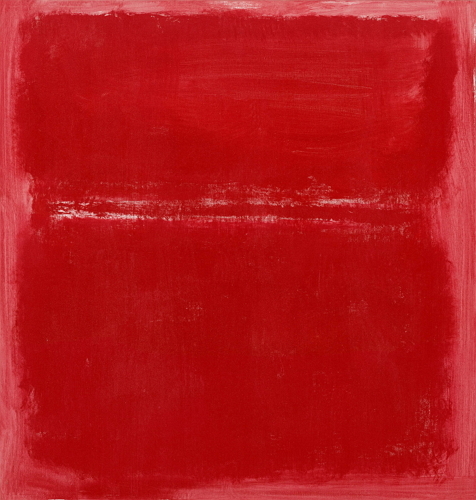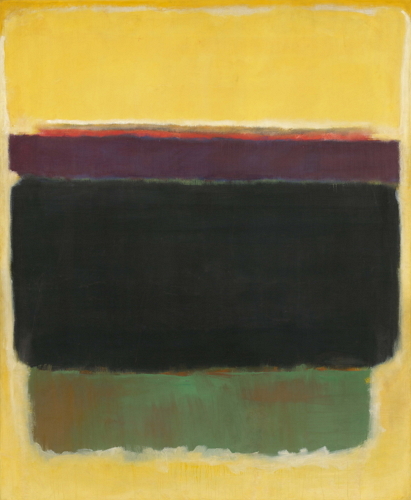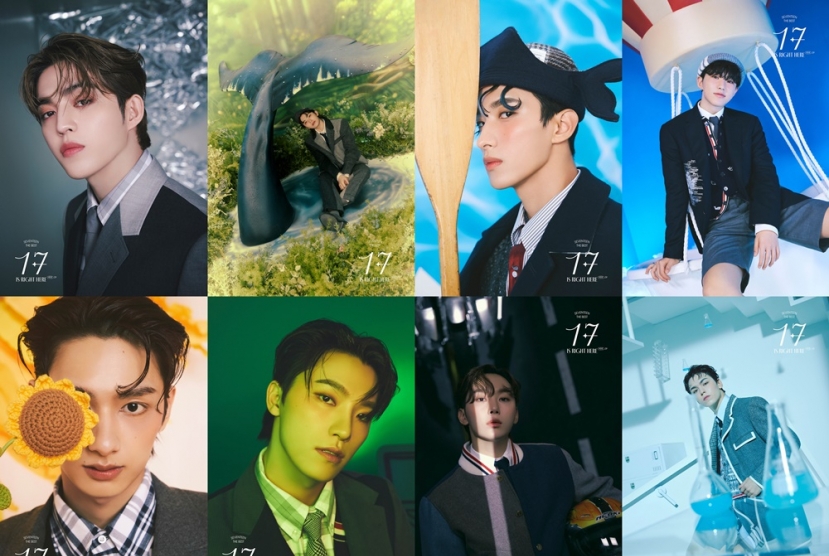With or without Jobs, Mark Rothko strikes a chord with Koreans
First retrospective of U.S. abstract expressionist in Korea presents major works spanning artist’s entire career
By Korea HeraldPublished : April 19, 2015 - 18:38
At the Mark Rothko retrospective currently underway in Seoul, Steve Jobs shares the spotlight with the American abstract painter.
The introduction wall to the exhibition displays a photo of Rothko (1903-1970) alongside that of the Apple founder (1955-2011), each supplemented by quotes apparently selected to serve a purpose ― linking the spiritual worlds of the two whose life had never crossed.
In advertisements and leaflets, Rothko’s paintings are billed as “the paintings that Steve Jobs loved.”
The introduction wall to the exhibition displays a photo of Rothko (1903-1970) alongside that of the Apple founder (1955-2011), each supplemented by quotes apparently selected to serve a purpose ― linking the spiritual worlds of the two whose life had never crossed.
In advertisements and leaflets, Rothko’s paintings are billed as “the paintings that Steve Jobs loved.”

The Jobs marketing ― the creator of iPhone and iPad was known to have been inspired by Rothko’s paintings and the artist’s philosophy of “simple expression of the complex thought” in his final year ― seems to be working, drumming up interest in the exhibition in a country which in the past showed little enthusiasm for abstract paintings.
“The paintings that Steve Jobs loved … . That Steve Jobs, who was notoriously sensitive of details?” wrote a viewer on an exhibition booking website.
Since its opening on March 22, the show has attracted more than 40,000, with an average of 1,000 viewers a day, local organizers said. That is in spite of the relatively expensive admission prices. Adults are charged 15,000 won.
The exhibition, at the Hangaram Art Museum in Seoul Arts Center, features 50 paintings, the largest shown in Korea, spanning Rothko’s entire career. Thanks to the large renovation going on at the National Gallery of Art in the U.S., the collection was able to travel for global tours in the Netherlands, South Korea and the U.S.

Viewers are greeted by his earlier works influenced by Greek mythology and philosophy, and then led to his signature “multiforms” series, featuring blurred blocks of various colors. A separate room is dedicated to the Rothko Chapel and is created to resemble the non-denominational chapel in Houston, Texas, designed by the artist for a spiritual experience between viewers and his paintings.
The exhibition also features highlight works from the peak of his artistic career such as paintings with color fields, grimmer monochrome paintings and Seagram murals, which was commissioned by a Four Seasons restaurant in New York, but was never shown in the swanky restaurant due to the artist’s objection.
Jobs may have helped in the exhibition’s popularity, but it is Rothko’s paintings and their spiritual energy that bring about genuine responses from viewers, said Kim Chan-yong, a docent of the exhibition.
“Some viewers revisit several times. Some stay before paintings for a long time and shed tears,” he said. “I haven’t seen such responses at previous exhibitions of foreign masters,” said Kim, who has been a docent to 46 major exhibitions of foreign artists such as Van Gogh, Gauguin and Munch for the last five years.
Wherever they are shown, the viewing experiences of Rothko paintings have often been associated with such words as healing, solace and emotions. One of the famous anecdotes tells of an American woman who lost her child weeping in front of the 1970 Untitled painting in red, Rothko’s last painting.
In fact, Rothko sought a spiritual and emotional experience between his paintings and viewers. He once said: “I’m not an abstractionist. I’m not interested in the relationship of color or form or anything else. I’m interested only in expressing basic human emotions: tragedy, ecstasy, doom, and so on.”
While many viewers said the exhibition was indeed a chance to look into their inner self, offering the much-needed moment in the country’s super-competitive society, some complained the marketing campaign was “too commercial.” They said they preferred nothing getting in the way between them and the paintings.
For Kim, this reflects Koreans’ elevated interest in art.
“It has been perceived that Koreans prefer pretty paintings such as Impressionist works, but the success of Rothko exhibition proves that they are ready to see other types of art that are significant in art history.”
By Lee Woo-young (wylee@heraldcorp.com)
-
Articles by Korea Herald









![[Graphic News] More Koreans say they plan long-distance trips this year](http://res.heraldm.com/phpwas/restmb_idxmake.php?idx=644&simg=/content/image/2024/04/17/20240417050828_0.gif&u=)
![[KH Explains] Hyundai's full hybrid edge to pay off amid slow transition to pure EVs](http://res.heraldm.com/phpwas/restmb_idxmake.php?idx=644&simg=/content/image/2024/04/18/20240418050645_0.jpg&u=20240419100350)







![[KH Explains] Hyundai's full hybrid edge to pay off amid slow transition to pure EVs](http://res.heraldm.com/phpwas/restmb_idxmake.php?idx=652&simg=/content/image/2024/04/18/20240418050645_0.jpg&u=20240419100350)

